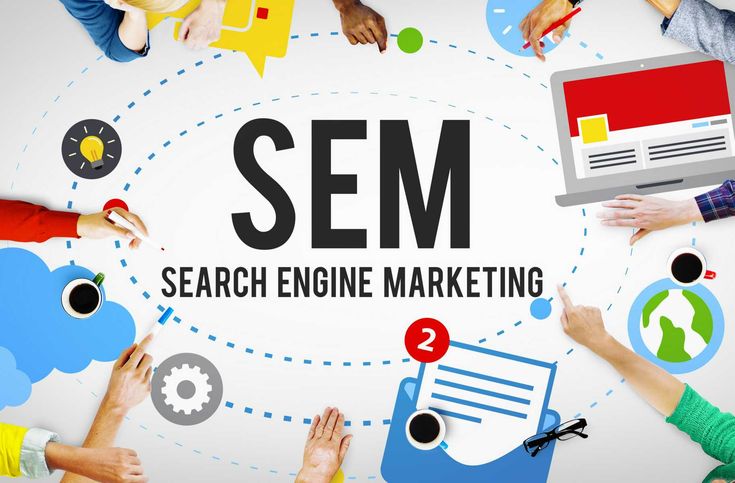Search Engine Marketing (SEM) has become an essential component of digital marketing strategies for businesses of all sizes. This comprehensive approach focuses on increasing visibility in search engine results pages (SERPs) through both organic search and paid advertising. Within SEM, Search Engine Advertising (SEA) plays a pivotal role by allowing businesses to leverage paid campaigns to reach their target audience more effectively. This article delves into the nuances of SEM and SEA, outlining their benefits, strategies, and best practices.
What is Search Engine Marketing (SEM)?
Search Engine Marketing encompasses a variety of techniques aimed at increasing a website’s visibility in search engines. SEM integrates both Search Engine Optimization (SEO) and Search Engine Advertising (SEA).
Key Components of SEM
Search Engine Optimization (SEO):
Definition: The process of optimizing a website to rank higher in organic search results.
Techniques:
- On-Page SEO: Optimizing content, HTML tags, and website structure.
- Off-Page SEO: Building backlinks and enhancing domain authority.
- Technical SEO: Improving site speed, mobile-friendliness, and crawlability.
Search Engine Advertising (SEA):
- Definition: The practice of paying for ad placements in search engine results.
- Common Platforms: Google Ads, Bing Ads, and other search engine ad networks.
Benefits of SEM
- Increased Visibility: SEM allows businesses to appear at the top of SERPs, increasing the likelihood of clicks.
- Targeted Audience Reach: Advertisers can target specific demographics, locations, and search behaviors.
- Measurable Results: SEM provides detailed analytics, enabling businesses to assess the effectiveness of their campaigns.
- Flexibility: Budgets can be adjusted based on performance, and campaigns can be launched quickly.
What is Search Engine Advertising (SEA)?
Search Engine Advertising refers specifically to the paid aspect of SEM. SEA involves creating ads that appear on search engine results pages and is primarily conducted through pay-per-click (PPC) advertising.
How SEA Works
- Keyword Research:
- Identifying relevant keywords that potential customers are likely to search for.
- Tools like Google Keyword Planner can help in selecting the right keywords.
- Ad Creation:
- Crafting compelling ad copy that attracts clicks while adhering to character limits set by the search engine.
- Including strong calls to action (CTAs) is essential.
- Bidding Strategy:
- Advertisers bid on keywords, and the cost is typically determined by a bidding system based on competition.
- Bidding strategies can include manual bidding, automated bidding, or using target CPA (cost per acquisition).
- Ad Placement:
- Ads are displayed in various formats, including text ads, display ads, and shopping ads.
- Placement is influenced by bid amount, ad quality, and relevance to the search query.
Benefits of SEA
- Immediate Results: Unlike SEO, which can take time to show results, SEA can generate traffic almost immediately after the campaign goes live.
- Highly Targeted Ads: SEA allows for granular targeting options, including location, device, and time of day.
- Cost Control: Advertisers can set daily budgets and control costs by using various bidding strategies.
Best Practices for SEM and SEA
- Conduct Thorough Keyword Research:
- Focus on both short-tail and long-tail keywords to capture a broader audience.
- Analyze competitors’ keywords to identify gaps and opportunities.
- Optimize Landing Pages:
- Ensure landing pages are relevant to the ad copy and provide a seamless user experience.
- A/B test different landing pages to determine which performs better.
- Utilize Ad Extensions:
- Enhance visibility and click-through rates (CTR) by using ad extensions such as site links, call extensions, and location extensions.
- Monitor and Adjust Campaigns:
- Regularly review analytics to understand campaign performance.
- Adjust keywords, bids, and ad copy based on data-driven insights.
- Stay Updated with Trends:
- The digital landscape is constantly evolving. Keep abreast of algorithm updates, emerging tools, and industry trends.
Conclusion
Search Engine Marketing, with its two critical components of SEO and SEA, is vital for businesses aiming to enhance their online presence and drive traffic. While SEO offers long-term benefits through organic visibility, SEA provides immediate results through targeted advertising. By understanding and effectively implementing SEM strategies, businesses can achieve substantial growth in their digital marketing efforts. Whether through optimizing for organic search or investing in paid advertising, the key lies in continuous learning, adapting to market changes, and leveraging data for informed decision-making.




